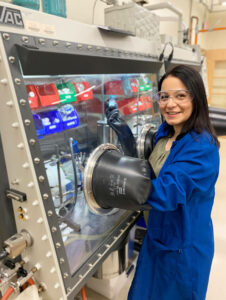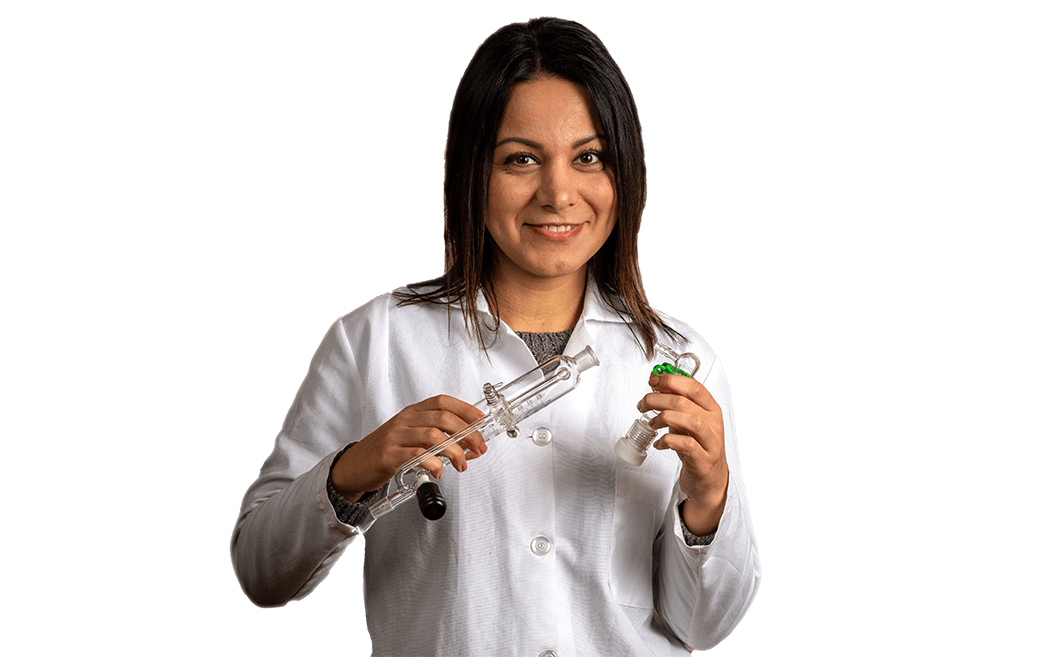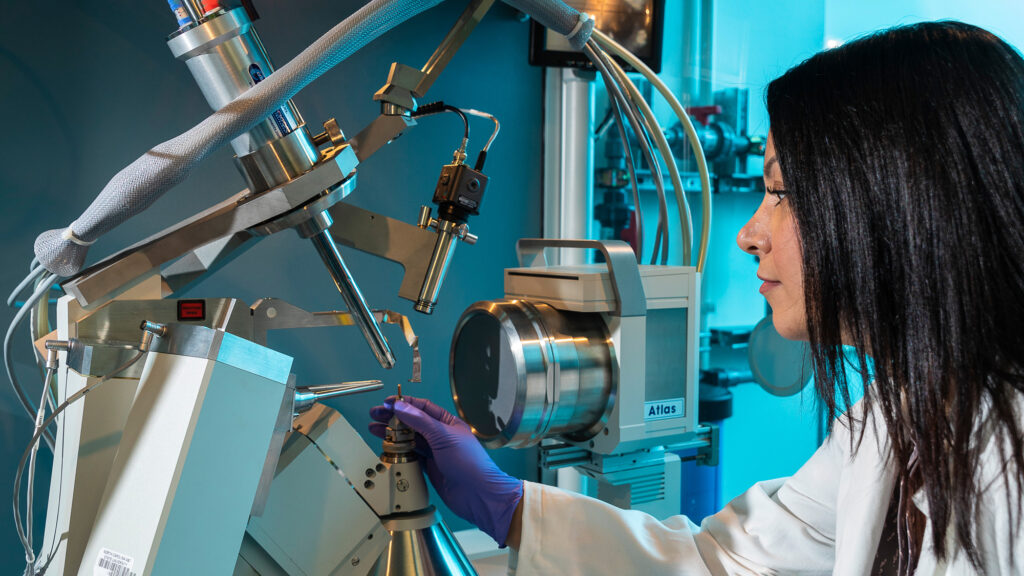Dr. Shabnam Hematian’s new NSF grant will catalyze both science and student research opportunities.
Solar panels on a roof. Mitochondria in a cell. A pregnant mom’s connection to her growing baby.
All around us – in our car batteries and inside our bodies – energy is transferred through chemical processes that utilize metal ions. And everywhere Dr. Shabnam Hematian looks, she sees this flow of electrons. With a new grant from the National Science Foundation (NSF), Hematian will explore how to make these fundamental reactions better – cleaner, more efficient, more productive – using light and air.
This spring, Hematian was awarded a two-year, $250,000 grant to fund new research on photocatalysts through an NSF program known as LEAPS – Launching Early-Career Academic Pathways in the Mathematical and Physical Sciences. The good news came at a happy time for Hematian, who had just given birth to her first child, a boy.
An assistant professor in the Department of Chemistry and Biochemistry in the College of Arts & Sciences, Hematian works in the field of bioinorganic chemistry, an interdisciplinary and relatively young science that explores questions with implications for chemistry, biology, energy science, materials science, and other fields.
Catalyzing science: Hematian uses light to drive chemical reactions.
“When I was young, I was fascinated by colors,” said Hematian. “Why is something red or blue or green? How can we change the colors? I learned, you know, human blood is red due to the iron in our hemoglobin, while a horseshoe crab has blood that’s blue because it contains copper.”
As a bioinorganic chemist, Hematian seeks to understand complex biological processes in terms of their fundamental chemical elements and reactions. She also takes inspiration from biology to inform her chemistry.

“Nature has already figured out a way to absorb light and use that energy to drive a reaction that wouldn’t happen otherwise,” she explains when discussing inspiration for her new research. “The light is key to making a compound that is more useful to the organism.”
The transformation of cheap, raw materials into more complex, more useful substances is what chemistry is all about. For example, chemists often work to introduce oxygen into hydrocarbons, thereby transforming them into compounds that are more polar, more reactive, and more valuable. These products can then serve as “feedstock” for a host of industrial applications ranging from pharmaceuticals to agriculture. However, existing methods for accomplishing that transformation tend to require harsh conditions and employ harmful and expensive chemical reagents.
Through the LEAPS-funded study, Hematian aims to find a cheaper and cleaner way to incorporate oxygen into these common compounds. First, she will draw on air as her oxygen source. Second, she will use light to accomplish the chemical changes typically wrought in a much harsher environment. To do this, though, she will have to build a better photocatalyst.
“A photocatalyst is a substance that can absorb the light and actually do the transformation,” Hematian explained. “It converts the light into energy that drives the reactions and incorporates oxygen into these compounds.”
Hematian and her team will investigate the workings of these photocatalysts, using various instruments and spectroscopic techniques to track the reactions as they happen – the speed, the efficiency, the yield. The advantages of using light to drive chemical reactions are obvious: it’s abundant and clean. But it also allows for great precision; it can be turned on and off in a flash, so the reaction can be controlled.
Catalyzing student research: Grant expands STEM opportunities for students.
Hematian’s LEAPS award will do more than just catalyze new research. The grant will also allow Hematian to create opportunities for local students who otherwise may not have a chance to be part of a research lab. Her proposal includes funds to support participation of three students each summer – one from a local community college, one from a high school, and one homeschooled student. Her recruitment will focus on students from backgrounds that are not well-represented in STEM fields.

“I want them to know they can be part of the STEM community,” Hematian said. “It will also be a chance for them to learn about green chemistry and why it’s important.”
Hematian has also benefited from programs designed to make research careers more accessible. She came to UNCG in 2018 after completing a postdoc at Caltech and her PhD at Johns Hopkins. She cites colleagues and collaborators in her department as key supporters, and she is especially grateful for UNCG’s Spartans Advance program, another NSF-funded project whose goal is to increase diversity and inclusion among STEM faculty. Through the Spartan Advance program, Hematian was able to secure funding for a research assistant to continue lab experiments while she was on family leave.
“It’s a challenge to be a new mom and still run a research lab,” Hematian said, “and the support from the Spartan Advance program has been fantastic.”
The investment has already paid off. Hematian was able to publish two papers while on family leave. And, of course, she wrote some grant proposals.
Read the NSF abstract: Photoactivation of Metal-Oxo Bonds in Heterobinuclear Systems for Oxidative Catalysis
Story and photography by Chad Fogleman, College of Arts & Sciences Office of Research






